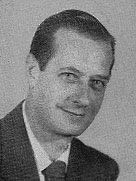
There are many prolific pulp writers whom many readers today are not aware of because often they didn’t move on to writing paperbacks or their pulp works were seldom reprinted, or a bit of both. One such author is Stuart J. Byrne (1913-2011).
Byrne wrote a lot of pulp science fiction, mainly for the magazines of Ray Palmer. Most were written under his name (or at least “S.J. Byrne”), but also appeared under several pseudonyms, “John Bloodstone” being a major one.
Few of these works were reprinted in book form during his lifetime. He did later write paperback originals.
I think many people may know him best for writing Tarzan on Mars, the unauthorized Tarzan novel, under his John Bloodstone pseudonym.
I first heard of him when he did the Star Man series follow-up to the U.S. edition of Perry Rhodan after 1979. Sadly, the Star Man series lasted less than a dozen short novels, but certainly was planned to run much longer. Now thanks to ebooks, I’ve been able to obtain the whole series, including the unpublished ones.
It’s interesting that Byrne actually used other works in creating the Star Man series, and admitted such in the extra notes and materials for Star Man (made available in the ebook materials). But as they were his prior works, that wasn’t a problem. The main one he used was “Power Metal,” his 1953 space opera novel that appeared in Other Worlds. And his also picked up elements from some other works of his, though he doesn’t note this (I’m not sure why). Thanks to Sinister Cinema’s Armchair Fiction line, I have been able to read most of those works.
First up is Power Metal, the reprint of which uses the original cover and includes the interior artwork from Other Worlds. In the future (I think the 25th century), Earth has colonized Venus and Mars, and has established a colony in the Alpha Centauri system, on a planet named Tera (which I thought was confusing, as we often refer to Earth as “Terra”). The Terans are all physical giants, being about 7 feet tall, as the planet has a higher gravity. Further, there are other intelligent species in the series. Venus has two, including one that lives in the lower carbon dioxide-heavy atmosphere, and there’s another on Tera.
But Earth is a dictatorship and rules over the other planets with an iron fist. There is a growing independence movement on Tera, which plans to strike. Larry Buchanan is pulled into it by his boss and rival Vincent Cardwell. The plan is to use an upcoming trip to Earth’s solar system to grab a load of “cosmium,” the “power metal” of the title, which is a more potent source of energy than uranium. With it, they can return to Tera and throw off the yoke of oppression. But Larry and friends learn too late it’s all a scam. Vincent is really in league with the former Earth governor of Tera who is using this scheme to replace the Earth dictator with the aid of the governor’s half-brother.
The coup is a success. Cardwell becomes the new “Interstellar Fleet Admiral,” and Larry and friends are sent to a labor colony on Venus in hopes they will die. And a fleet is being sent back to Tera to put down the rebellion there.
Instead, Larry and his associates take advantage of the situation. One of them is a nuclear physicist. With his knowledge, teaming up with the Venusian natives, and using lost Jesuit super-science, they build a new and more powerful starship that can travel distances instantaneously, rather than at 95 percent of the speed of light, which cosmium-power ships can do. While it takes them 50 years overall(!), they defeat the Earth dictatorship, and more importantly, open up the universe to exploration, so that all four races can now leave and find their own worlds to live on.
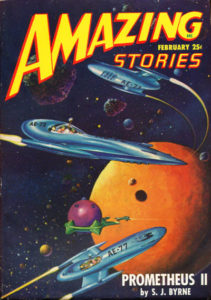 Taking that same basic plot, Byrne turns this into the Star Man series. In the future, Earth is a dictatorship ruling over Mars and Venus, and a new colony in Alpha Centauri. The dictator is now Vincent Cardwell. Replacing Larry is mutant Earth astronaut Stephen Germaine, who was launched toward Alpha Centauri in hybersleep. He takes his name from the hero of Byrne’s two earlier novels Prometheus II and The Golden Guardsman: Stephen Germain. These two have also been reprinted by Armchair Fiction. In Power Metal, part of the rivalry between Larry and Vincent was over a girl they both loved, but who married Vincent. She played but a minor role in that work, as Larry instead got involved with a half-breed Venusian girl. In the Star Man series, Anne Cardwell plays a much larger role.
Taking that same basic plot, Byrne turns this into the Star Man series. In the future, Earth is a dictatorship ruling over Mars and Venus, and a new colony in Alpha Centauri. The dictator is now Vincent Cardwell. Replacing Larry is mutant Earth astronaut Stephen Germaine, who was launched toward Alpha Centauri in hybersleep. He takes his name from the hero of Byrne’s two earlier novels Prometheus II and The Golden Guardsman: Stephen Germain. These two have also been reprinted by Armchair Fiction. In Power Metal, part of the rivalry between Larry and Vincent was over a girl they both loved, but who married Vincent. She played but a minor role in that work, as Larry instead got involved with a half-breed Venusian girl. In the Star Man series, Anne Cardwell plays a much larger role.
I next read Prometheus II (Amazing Stories, 1948) and The Golden Guardsman (Other World, 1952) mainly to see how much alike the character of Stephen Germain is in the original works versus in Star Man. These works are set in the future — 1970 — and has elements of the Shaver Mystery (hence some thought that Byrne was actually a pseudonym of Shaver or vice versa). The United States and the free world is threatened by a Russian dictator bent on world domination who teams up with the deros! Germain is a secret agent working behind enemy lines in South America to stop him (and is the “Prometheus II” of the title). Yes, the Russians have invaded and conquered the southern half of South America! Germain is also married, and his wife is pulled into things as well.
Captured by a mad scientist, he is experimented on and his mind expanded, giving him super-intelligence and telepathy. With his mind he is able to contact first Agharti, the kingdom under the Himalayas where the good teros live, and then the Elder Race who comes to help mankind in their time of need, destroying the deros and sending the Russian dictator off to the asteroid belt to be destroyed. This ushers in a new age lead by the King of the World in Agharti.
The Golden Guardsmen is set several years later. The Golden Guardsmen is a defense force established by Germain that is protecting the Earth from sinister extraterrestrial intelligences. We are even told of previous adventures in passing. And that Russian dictator returns, teamed up with the most sinister intelligence ever in a bid to destroy Germain and conquer the world: Izdran the Nrlan, who is from a planet that was destroyed and left behind the asteroid field. He is defeated, but leaves a legacy by what he did to Germain’s newborn child.
Okay, so now we move back to “Star Man”. Not really. Now we take a look at Star Man, a 1969 novel published by a small publisher named Powell. In this novel, 20th century astronaut Larry Buchanan(!) is launched into space, but due to an accident is frozen and discovered near the Alpha Centuari system five centuries later. At that point, the rest of the story is literally a copy of Power Metal! So maybe Byrne was really thinking of this novel when he spoke of Star Man being based on Power Metal? However, clearly the element of a 20th-century astronaut accidentally sent off into cryosleep comes from here.
What about the Star Man series? Well, I had mentioned it was created as a replacement to the U.S. edition of Perry Rhodan, whom I previously posted on. When the plug was pulled on the series, Ackerman and company tried to replace it with a new series by Byrne, who was one of the Rhodan translators. The plan was to offer, I think on a quarterly basis, a large trade paperback with five to six Star Man novels. The first volume had the last Perry Rhodan novel and the first five Star Man novels. The second volume had the next six Star Man novels. But the series never went further. At least two more Star Man novels were written. It would not be until an ebook publisher (FuturesPast Editions) put out all 13 Star Man novels into a series of seven omnibus editions, with two novels per edition.
You can see the roots of Power Metal in the series, but it has been rewritten as the foundation of a whole, new series of works, using elements from the Stephan Germain books and the Star Man novel. As I noted, Earth is a dictatorship ruling over Mars and Venus, with a new colony in Alpha Centauri. Vincent Cardwell is the dictator, though he presents himself as fleet admiral, grooming his mutant 11-year-old son, Victor, as the future emperor. Stephen Germaine is now the hero from the past come to save the future, arriving in Alpha Centauri at the planet Thulone. The storyline is similar to Power Metal/Star Man, but expanded. It would have been interesting had it continued.
In a future posting, I hope to cover his Michael Flannigan trilogy (which you can read either in ebook format or (surprise) in book form from Armchair Fiction), as well as some of his other works.


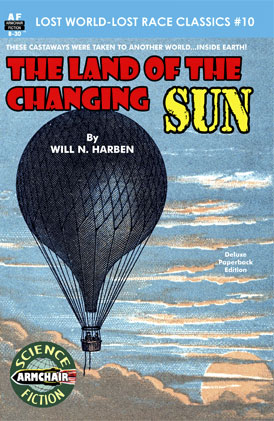
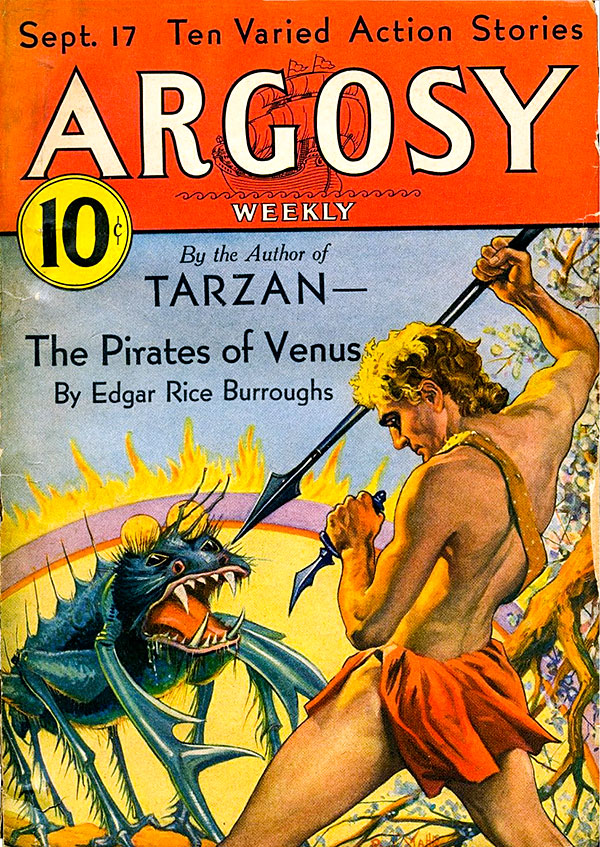
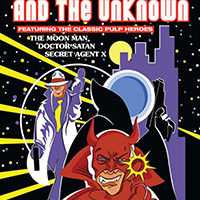
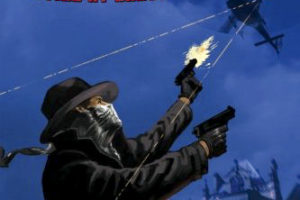
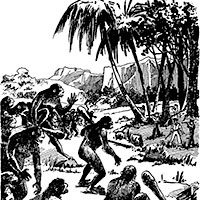
Your comments